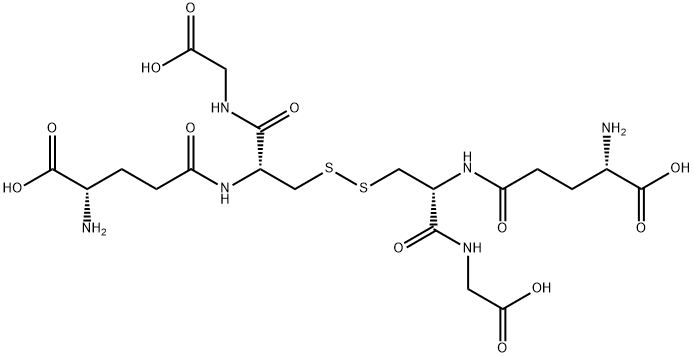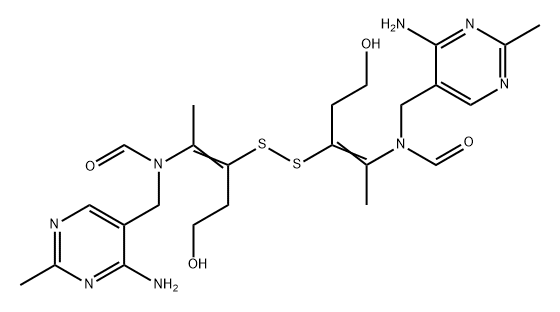L-Glutathione oxidized , 98% , 27025-41-8
Synonym(s):
Cyclic(γ-Glu-Cys-Gly)₂, GSSG;Glutathione, Oxidized, Free Acid - CAS 27025-41-8 - Calbiochem
CAS NO.:27025-41-8
Empirical Formula: C20H32N6O12S2
Molecular Weight: 612.63
MDL number: MFCD00063106
EINECS: 248-170-7
| Pack Size | Price | Stock | Quantity |
| 1G | RMB68.00 | In Stock |
|
| 5G | RMB300.00 | In Stock |
|
| 25G | RMB1288.80 | In Stock |
|
| 100g | RMB5119.20 | In Stock |
|
| others | Enquire |
PRODUCT Properties
| Melting point: | 178 °C (dec.)(lit.) |
| alpha | -99 º (c=4, water) |
| Density | 1.3688 (rough estimate) |
| refractive index | -105 ° (C=2, H2O) |
| storage temp. | 2-8°C |
| solubility | H2O: soluble |
| form | powder |
| pka | 2.12, 3.59, 8.75, 9.65(at 25℃) |
| color | White to off-white |
| optical activity | -111.016 (H2O) |
| biological source | synthetic |
| Water Solubility | soluble |
| Merck | 13,4488 |
| BRN | 1718700 |
| Stability: | Stable. Incompatible with strong oxidizing agents. |
| InChIKey | YPZRWBKMTBYPTK-USZNOCQGSA-N |
| CAS DataBase Reference | 27025-41-8(CAS DataBase Reference) |
| EPA Substance Registry System | Oxiglutatione (27025-41-8) |
Description and Uses
L-Glutathione oxidized(GSSG) is produced by the oxidation of glutathione. Detoxification of reactive oxygen species is accompanied by production of it. It can be used for the research of sickle cells and erythrocytes. The ratio of glutathione (GSH) to oxidised glutathione (GSSG) is a key indicator of cellular oxidative stress. It can be used in the clinical diagnosis and treatment of leukaemia by detecting the level of cellular GSH/GSSG in acute myeloid leukaemia (AML), which is characterised by oxidative stress leading to abnormally low levels of oxidised glutathione, with real-time, dynamic and highly sensitive characteristics[1].
L-Glutathione is used as a Acts as hydrogen acceptor in enzymatic determination of NADP and NADPH, it is used to reduced back to glutathione (GSH) via the NADPH-dependent enzyme glutathione reductase. The ratio of GSH to GSSG is often used to gauge the level of oxidative stress in cells, with higher concentrations of GSSG implying more oxidative stress, L-Glutathione formation is used to study the polymorphism in glutathione conjugation ac tivity of human erythrocytes towards ethylene dibromide.
Safety
| Symbol(GHS) |  GHS07 |
| Signal word | Warning |
| Hazard statements | H335-H315-H319 |
| Precautionary statements | P264-P280-P302+P352+P332+P313+P362+P364-P305+P351+P338+P337+P313-P261-P280a-P304+P340-P305+P351+P338-P405-P501a |
| Hazard Codes | Xi |
| Risk Statements | 36/37/38 |
| Safety Statements | 26-36-24/25-36/37/39-27-37/39 |
| WGK Germany | 2 |
| RTECS | MC0556500 |
| HS Code | 29309090 |
| Toxicity | mouse,LD50,intravenous,> 2gm/kg (2000mg/kg),Kiso to Rinsho. Clinical Report. Vol. 23, Pg. 6793, 1989. |




